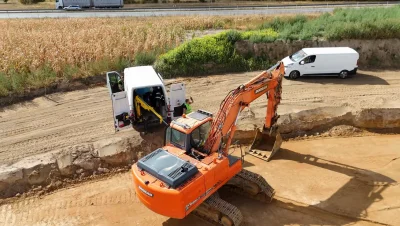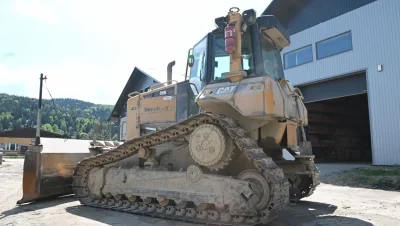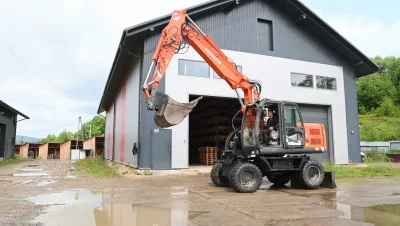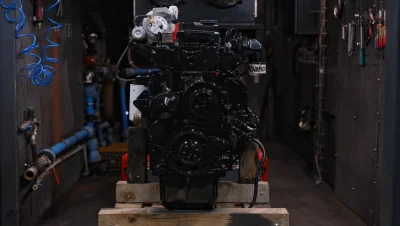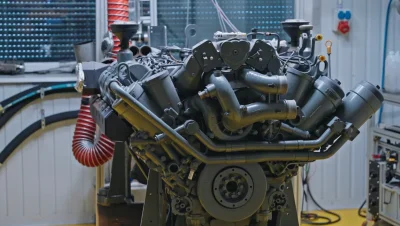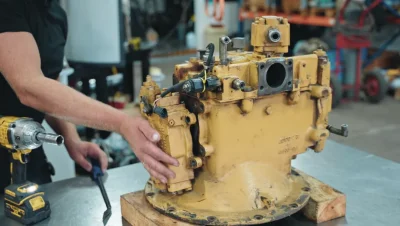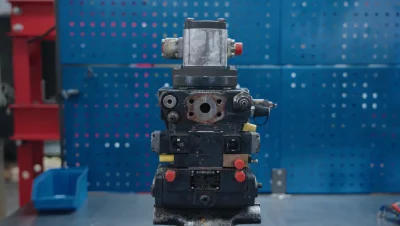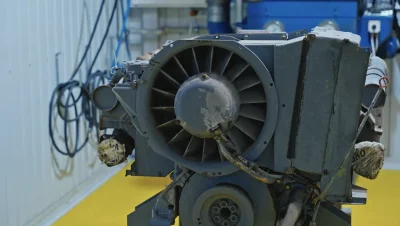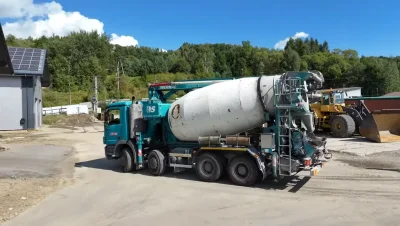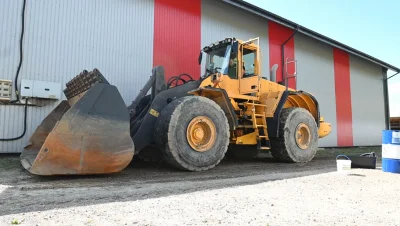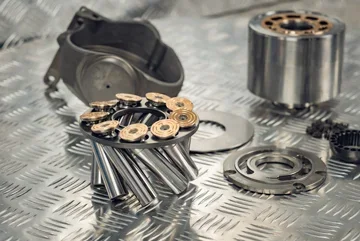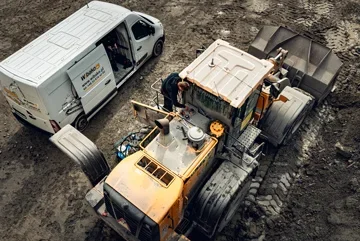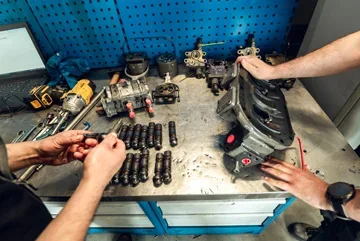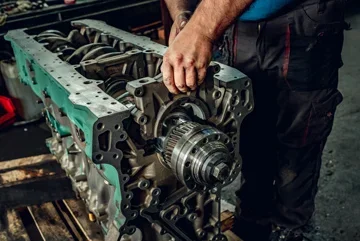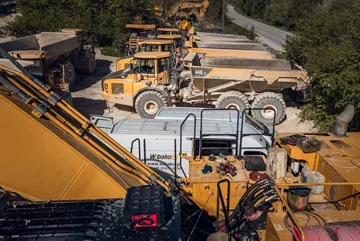Technological progress in the field of internal combustion engines
Technological progress assumes not only the emergence of new methods of dealing with existing problems, but also the continuous improvement of existing solutions. This rule does not bypass construction machinery.
One of the areas in which designers and engineers strive for constant improvement of performance while simultaneously lowering the expenditure of resources needed to achieve these results are internal combustion engines.
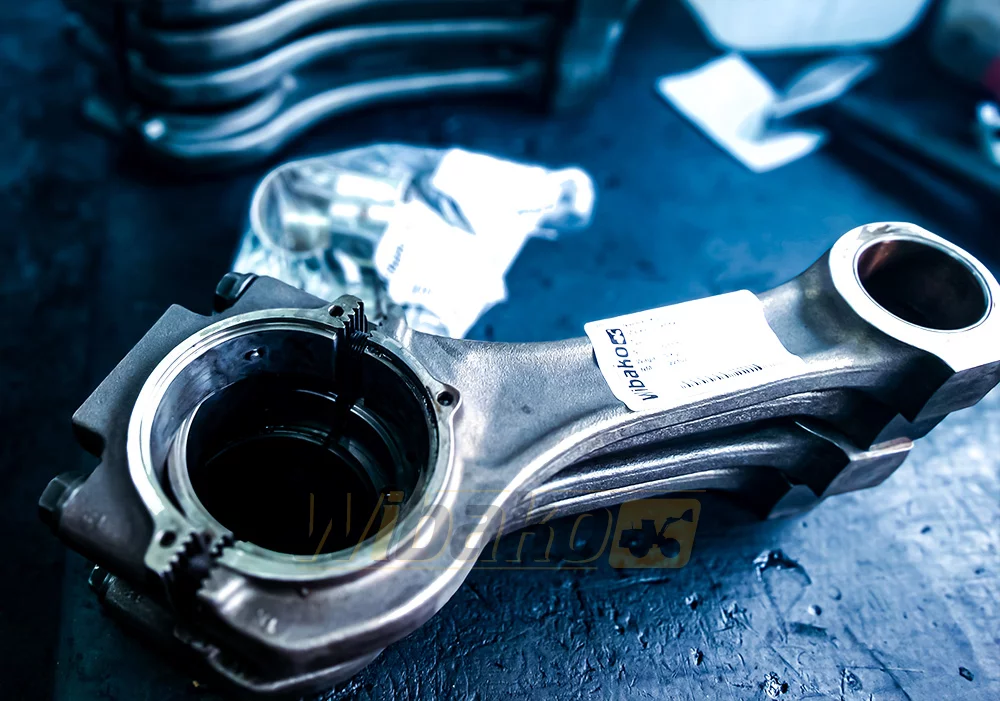
Internal combustion engine - how does it work?
Construction machinery is powered by high-pressure internal combustion engines operating on the principle of burning diesel fuel, converting chemical energy into mechanical energy. Multiple strokes of the piston as a result of ignitions cause the crankshaft to rotate. The engine operation is based on a repeating cycle of intake, compression, power and exhaust.
The first process (intake) causes the piston to descend down the cylinder, resulting in a vacuum in the combustion chamber. The intake valve then opens, sucking clean air (in the case of a diesel engine) into the combustion chamber as a result of the piston's movement.
In the second stage (compression) in a diesel engine, the air is compressed and ignition is preceded by fuel injection, here it occurs spontaneously due to the increased temperature and pressure caused by compression.
The work cycle, which then occurs, causes a sudden movement of the piston downwards, generating driving force. This force is transmitted through the connecting rod to the crankshaft, which converts the reciprocating motion of the piston into rotary motion.
The rotary motion of the crankshaft is used to drive other elements. In the case of construction machinery, these are most often hydraulic pumps and gearboxes.
The last phase is exhaust - the piston moves up again, thereby pushing out the exhaust gases formed after the combustion of the fuel-air mixture. These are then led from the cylinder to the exhaust system and emitted outside.
The difficult terrain and the specific role of construction equipment require the generation of a considerable amount of energy to operate its basic functions, and the rigorous and constantly growing standards for exhaust emissions force the development of ever newer technological achievements that improve parameters in this area.
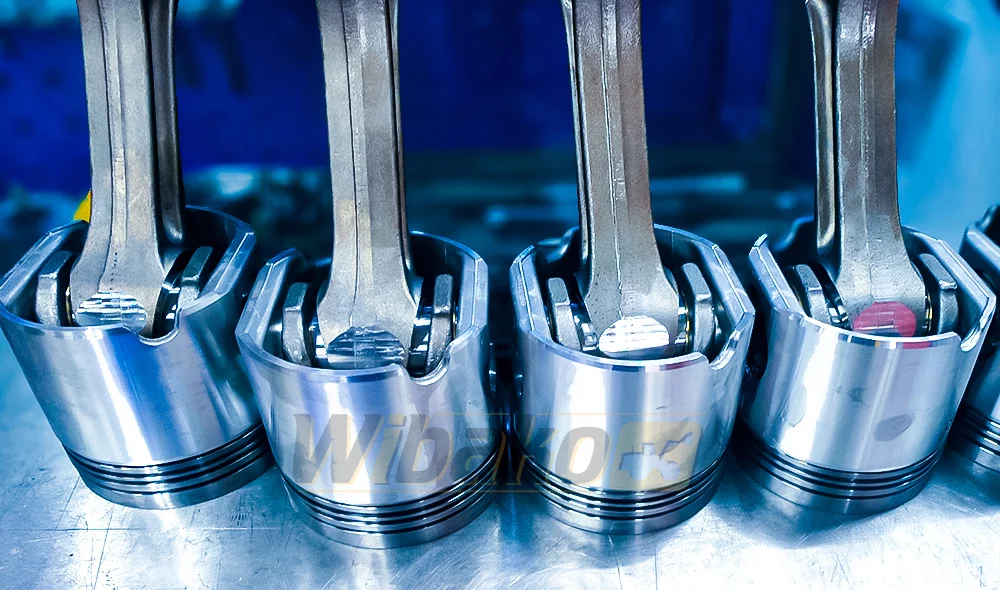
Types of technology - Common Rail, SCR, EGR, hybrid solutions and electric drives
Internal combustion engines are subject to constant improvement of technical thought, which aims to increase efficiency and reduce exhaust emissions. Efforts undertaken in this matter have led to the creation of many modern design solutions, currently used in construction machinery. Several of these technologies will be introduced in this text.
Common Rail
First, we will introduce the technology in the field of fuel injection in internal combustion engines. Direct fuel injection is a technology used in internal combustion engines, in which diesel fuel is admitted directly into the combustion chamber. This is an alternative to traditional indirect injection, where diesel fuel is supplied to the intake manifold.
In the case of direct injection - the injector is located in the cylinder head. This is a more precise method of fuel delivery, as it is introduced directly into the combustion chamber, allowing for better control over the fuel-air mixture. Below we explain what the Common Rail technology, which uses similar solutions, is all about.
The beginnings of this design technique date back to the 1970s and Fiat. After its introduction to the market in the 1990s, it was adopted by other manufacturers and went beyond the category of passenger cars, where it originally premiered, finding application also in engines for construction machinery.
Common Rail, as we mentioned, refers to the fuel injection system. In the era before the creation of this technology, traditional engines were equipped only with a fuel pump connected to the tank with the energy carrier. This supplied the fluid to the injectors, and its pressure depended on the operation of this pump.
In the case of an engine with Common Rail technology, diesel fuel is stored in a special fuel rail under high constant pressure, to which the injectors are connected.
Electronic control allows for precise adjustment of the time and amount of liquid that is injected by the injector, receiving an appropriate electronic signal, dosing oil directly into the combustion chamber.
Thanks to the precision and flexibility in controlling the injection, the internal combustion engine can achieve better efficiency and emission reduction and better adjust the injection parameters to driving conditions. This translates directly into an increase in power, savings and less emission of harmful substances.
Many construction machinery manufacturers, including Caterpillar, Komatsu, Volvo, and Hitachi, strive to implement advanced technologies in order to increase efficiency while meeting growing requirements for emission reduction.
SCR - Selective Catalytic Reduction
Selective Catalyst Reduction is an advanced system for reducing nitrogen oxides in internal combustion engines. It works by applying a special catalyst and a chemical mixture (AdBlue), which is stored in a tank, in the form of an aqueous solution.
By directing the fluid under high pressure into the exhaust stream, chemical reactions occur aimed at converting harmful NOx substances into nitrogen (N2) or water (H2O).
The SCR system is usually located in the exhaust system of the machine right after the internal combustion engine, close to where the exhaust gases leave this system. In the case of some types of construction machinery, SCR elements may be placed in special housings inside the exhaust system.
SCR technology is one of the most effective reducers of nitrogen oxide emissions, estimated to achieve nearly 90% efficiency in reducing harmful substance emissions.
EGR - Exhaust Gas Recirculation
Exhaust gas recirculation systems - similarly, we are dealing with technology used to reduce nitrogen oxide emissions. The operation of EGR involves redirecting part of the exhaust gases from the exhaust system back into the engine's combustion chamber.
There, the presence of exhaust gases leads to a reduction in flame temperature and thus limits the formation of nitrogen oxides at high temperatures. However, this technology shows lower efficiency compared to SCR and susceptibility to potential failures of the recirculation system due to soot deposition.
Hybrid solutions and electric drives
The constantly emerging new guidelines, aimed at limiting the use of traditional energy resources, influence the development of hybrid technologies, which are becoming increasingly visible among construction machinery.
Combustion-electric drives are gaining popularity among leading manufacturers of construction equipment. These types of drives combine a combustion engine with an electric unit.
The former is used in the machine drive during work with larger loads, and the electric motor supports it during lighter effort or in energy-saving mode.
Another application of the electric unit may be the generator function, which recovers energy during braking or slowing down and stores it in batteries. This allows for a reduction in exhaust emissions, improves efficiency and reduces fuel consumption.
Fully electric drives in construction machinery use electric motors as the main source of drive. Electric motors are powered by batteries or other sources of electric energy, such as power generators or external power sources. Examples of such machines can be found in the offer of some companies, such as Volvo, Caterpillar, Hitachi, Komatsu, or JCB.
Final balance
In conclusion, it is also necessary to mention the limitations of the technological solutions mentioned in the text and potential problems they may cause. In the case of Common Rail, the complex structure and advanced electronics controlling the pressure are pointed out, which in case of failure generate a much higher repair cost.
Looking at both systems for reducing nitrogen oxide emissions, it is often pointed out that elements such as the SCR catalyst can get clogged with soot, similar problems can also be caused by the EGR valve of the exhaust gas recirculation system. It is also important to remember to regularly top up the AdBlue fluid in the SCR.
Investments in constructions with hybrid drives and electric drives are associated with a higher initial cost compared to traditional diesel counterparts. Additionally, due to the rather "exotic" nature of these machines, there may be difficulties with servicing equipment that has broken down.
The need for battery charging in the case of electric drives requires access to charging infrastructure, resulting in an additional expenditure of money for the purchase of such a generator.
Hybrid drives, due to the presence of a supplementary electric system and batteries in them, are able to increase the weight of the vehicle.
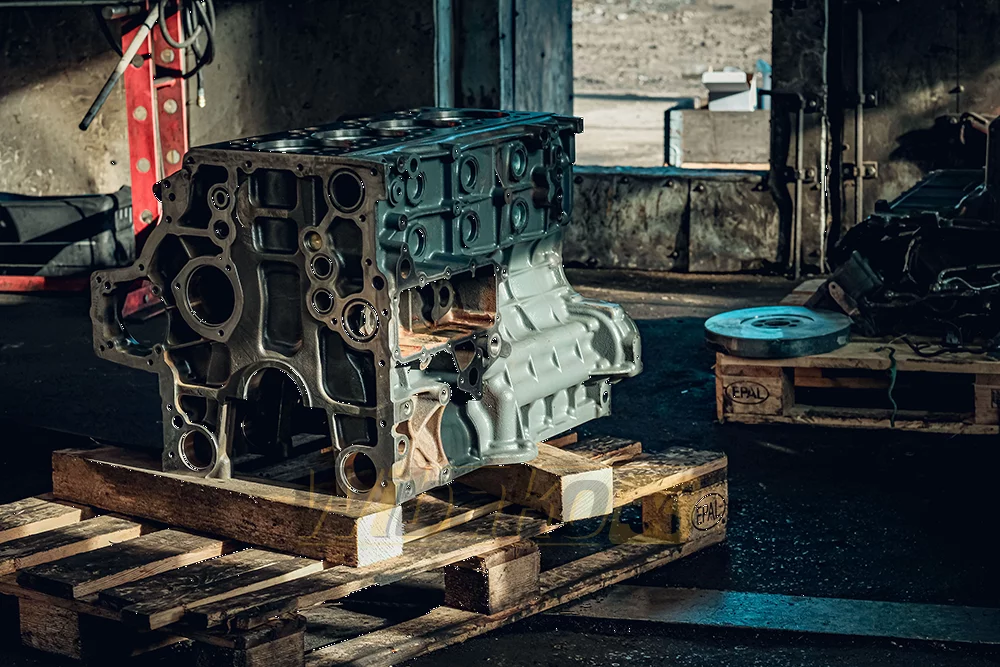
Summary and Wibako internal combustion engine service
The technological solutions described in the text have undeniable advantages, but of course also their disadvantages. The development of individual systems depends on the constant need to adapt equipment to new requirements for operation and growing standards for reducing exhaust emissions.
At Wibako, we have extensive experience in repairing internal combustion engines. We perform major overhauls of these components, offering our clients verification, replacement or regeneration of individual parts, assembly and assembly into a whole.
The final phase of the overhaul is always exhaustive unit tests, to ensure that the implemented works have achieved the desired effect and restored the internal combustion engine to efficiency.
We encourage you to familiarize yourself with the details of the overhaul offer. If you are looking for specific parts for an internal combustion engine or a complete unit, we recommend our parts catalog.



